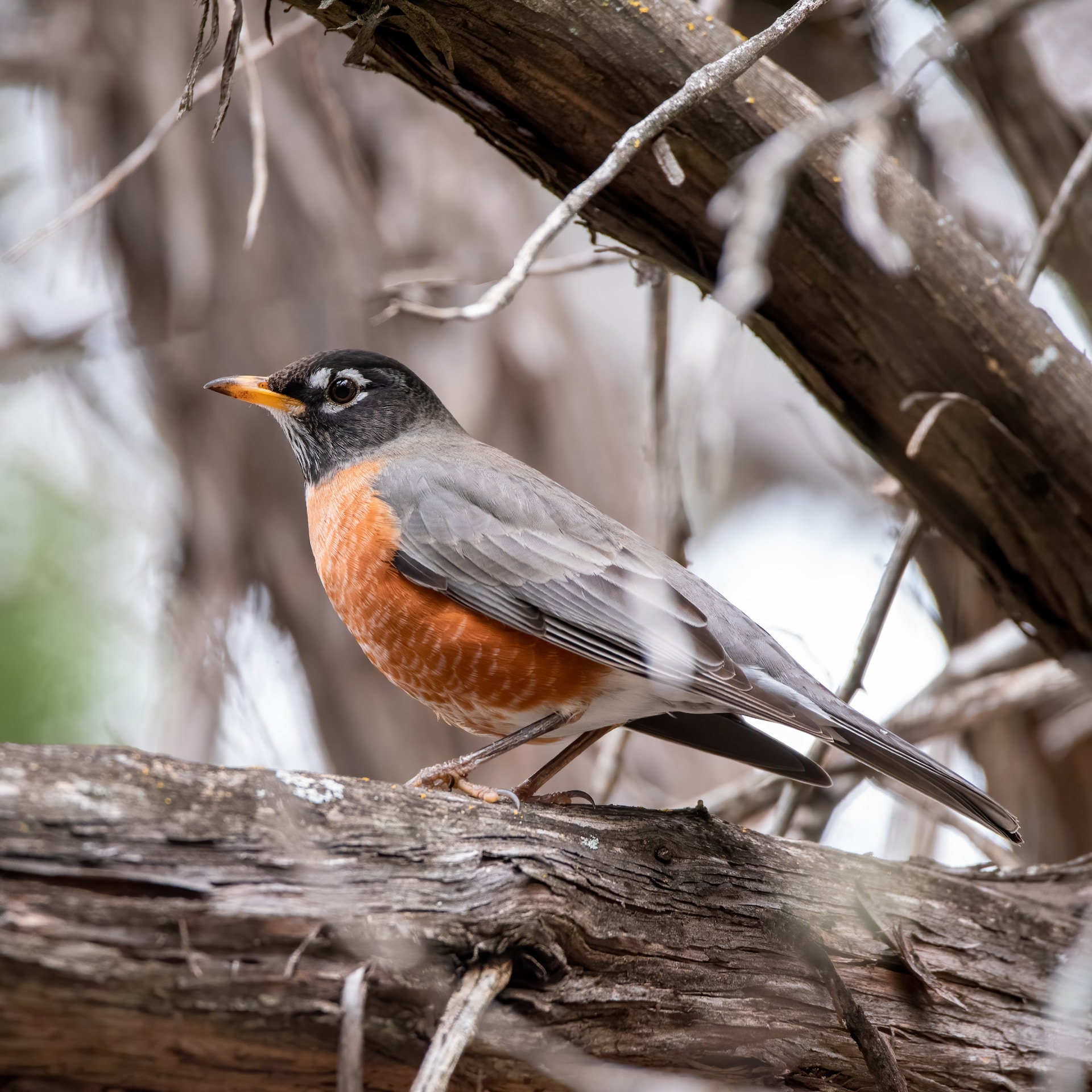The American Robin holds a special place in American homes and gardens with its earthworm-loving habits and unique song. Found across the whole continental U.S., you can spot these birds from the dense forests of the Pacific Northwest to the marshes of Florida. Furthermore, their delightfully unique song and colorful feathers make them a favored guest in any garden. But how can you create an environment that attracts these captivating birds? This guide will delve into this subject and provide a thorough approach to creating a backyard haven for American Robins.
Creating a Food Supply for American Robins
The American Robin is a bird with a broad diet, enjoying a variety of foods ranging from insects to berries. As you plan the details of your garden, keeping these food preferences in mind can make your space a prime destination for this adaptable songbird. Worms and insects make up a significant portion of their diet. Hence, avoiding pesticides in your garden can create an organic food source for them.
Native fruits and berries are another favorite food, attracting Robins during the summer and fall when insects become scarce. Plant native fruit trees and berry bushes such as dogwood trees or raspberry and blackberry bushes. Also, consider setting out mealworms, especially during the breeding season when protein-rich foods are in high demand.
For the optimal benefit, distribute these food sources throughout your garden rather than a single spot. They like to hop on the ground searching for insects and worms, so having a layered landscape with open areas will be inviting. Location and ease of access can make a significant difference in how readily Robins come to your garden.
Providing Adequate Water Resources
Water is vital for Robins, serving both as a source of hydration and a place to bathe. Setting up a birdbath or a water feature in your garden can make it significantly more attractive to Robins. They prefer shallow water, so water features should ideally have a depth of around two inches. Providing movement with a waterfall or fountain can also increase attractiveness as they love to splash around.
Setting up birdbaths and water features is relatively easy. Simply choose a quiet, safe area in your garden that is visible from your house but also offers quick access to trees for emergency escapes. Alternatively, try hanging a bird bath from a tree or install it at a height of about three feet from the ground.
Regular maintenance of these water sources is crucial. Remember to refill the water daily during warmer months, and clean the bath at least once a week to prevent algae from growing. In winter, use a heater to prevent water from freezing.
Ensuring Proper Nesting Sites for Breeding
The American Robin’s nesting habits differ from many other birds. Frequently choosing to nest on human-made structures like gutters or window ledges, providing protected, flat surfaces in the garden can cater to their nesting preferences. In natural settings, they prefer to nest in the lower branches of trees and shrubs.
If your garden lacks such places, consider incorporating low shrubbery and sparse tree plantings. If this isn’t possible, nest platforms can be a great solution. These manufactured nesting options often come with proper roof protection to safeguard Robin eggs and chicks from predators and weather elements.
Nest box placement should be quiet, sheltered, and ideally facing east. This shields the birds from afternoon sun and the worst of the weather. Boxes should be around six feet off the ground and at least several feet away from feeders or busy parts of the garden.
Nurturing Plants That Attract Robins
Native plants not only supply natural food resources but also offer shelter and nesting spots. In particular, berry-producing shrubs and trees like dogwoods, serviceberries, hollies, and elderberries are appreciated by Robins. These provide food and also attract the insects that Robins feed on.
Besides providing direct benefits to the birds, these native plants also enhance the aesthetic appeal of your garden. Remember, it isn’t enough only to plant these attractive species; care and maintenance are paramount. Regular watering and pruning, especially during the spring, can help your plants flourish.
Ensure the soil is well-draining, and regularly enrich it with organic compost. Keep an eye out for any signs of diseases or pests, and treat them promptly with organic pesticides whenever necessary.
The Importance of Safety from Predators
Predators like domestic cats, hawks, and snakes pose a significant threat to American Robins, especially their chicks and eggs. To make your garden a safe haven for Robins, identify potential predators in your local area and take steps to deter them. This could include installing cat deterrents or providing plenty of cover for the birds in the form of dense shrubs.
Consider installing fences or netting around your garden to deter ground predators. Meanwhile, providing dense canopy cover can help protect against flying predators. Bird-friendly garden features such as feeders, baths, or nest boxes should be positioned close to shrubs or trees, providing quick escape routes.
A successful and thriving Robin-friendly garden requires continuous monitoring and adaptations. Keep an eye on the gardening practices that seem to attract Robins and focus on enhancing those. Be patient, as it might take a while for Robins to find and feel safe in your garden. But with a balanced ecosystem and steady resources, you can create a bustling bird paradise inviting the melodious songs of the American Robin to your backyard.

